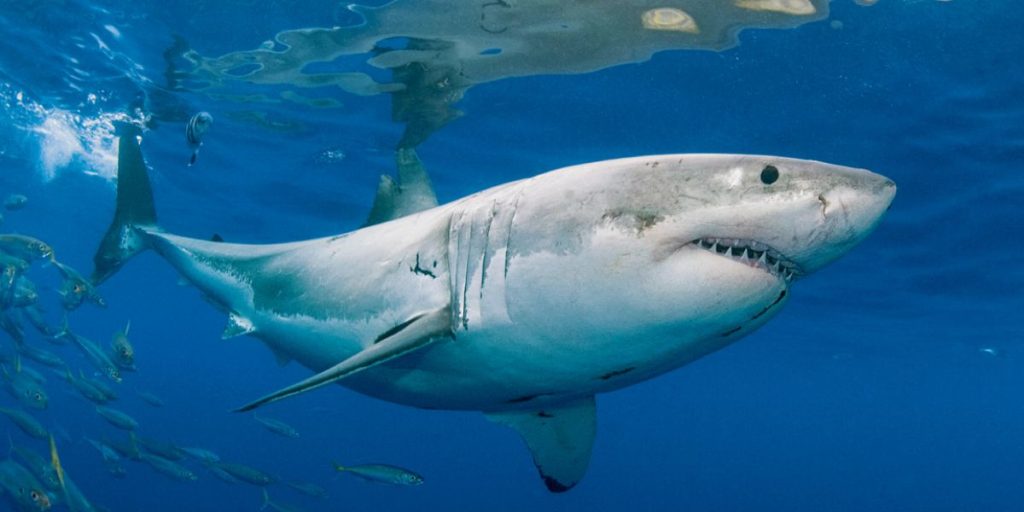While great white sharks have excited the public for decades, scientists still don’t know much about their life cycles, such as where they mate or give birth.
However, a new discovery may provide some answers to these problems. Researchers have reported what appears to be an extremely uncommon encounter with a newborn white shark, and photographs of the infant are published today in the journal Environmental Biology of Fishes.
They acquired video footage of the young shark, which “was unlike anything we had ever seen before,” according to Phillip Sternes, a research co-author and organismal biologist at the University of California, Riverside.
The researchers used a drone camera to study the shark off the coast of Carpinteria, California, near Santa Barbara. scientists believe it is a baby due to its size—the shark was only about five feet long—as well as a white film coating the creature, which scientists speculate could be an intrauterine material.
“Where white sharks actually give birth to their pups remains one of the ocean’s great mysteries,” Tobey Curtis, a shark ecologist at the National Oceanic and Atmospheric Administration who was not involved in the research, tells the Washington Post’s Carolyn Y. Johnson via email. “Observations of free-swimming newborn white sharks are extremely rare, and any new video or photographic evidence may be very valuable.”
White sharks can be found in all oceans throughout the world. They live near the United States on both coasts—from Maine to the Gulf of Mexico and the Caribbean in the Atlantic, and from Alaska to California and Hawaii in the Pacific.
Shark populations dropped in the twentieth century as a result of human activities such as overfishing, illegal poaching, and trophy hunting. White sharks are classified as vulnerable species by the International Union for Conservation of Nature and are now widely protected around the world.

Scientists haven’t seen many newborn white sharks since they don’t know where they give birth. Only three or four white sharks under a year old had ever been observed in the wild, according to Charles Underwood, who studies shark paleontology and evolution at Birkbeck, University of London, and did not contribute to the latest results.
It has been “nearly impossible to be in the exact right place at the exact right time to observe and document the moment of birth,” Curtis tells Science.
However, on July 9, 2023, Sternes and Carlos Gauna, a wildlife cameraman and co-author of the study, captured the unusual footage of the supposedly newborn shark. White sharks are generally white on the bottom and gray on top, but the milky substance around this shark made it utterly pallid.
Aside from its color and size, a few additional characteristics pointed to the shark being a newborn. For starters, it possessed rounded fin ends like white shark embryos and young white sharks. The location where the shark appeared had previously been mentioned as a potential site for white shark birthing, and the timing was consistent with projections. Furthermore, the researchers had seen mature white sharks in the vicinity in the days before.
While the researchers believe the white layer that the shark was shedding was amniotic fluid, they also agree that it could be a sign of a skin condition in an older shark than a baby.
Christopher Lowe, director of the Shark Lab at California State University, Long Beach, who was not involved in the research, tells the Washington Post that while the fish is “definitely a young shark,” he believes the skin condition explanation is correct.
Scientists will need to do additional research to test these two hypotheses. However, if the shark is indeed a newborn, the study authors suggest that more effort should be made to conserve the area for white shark conservation.